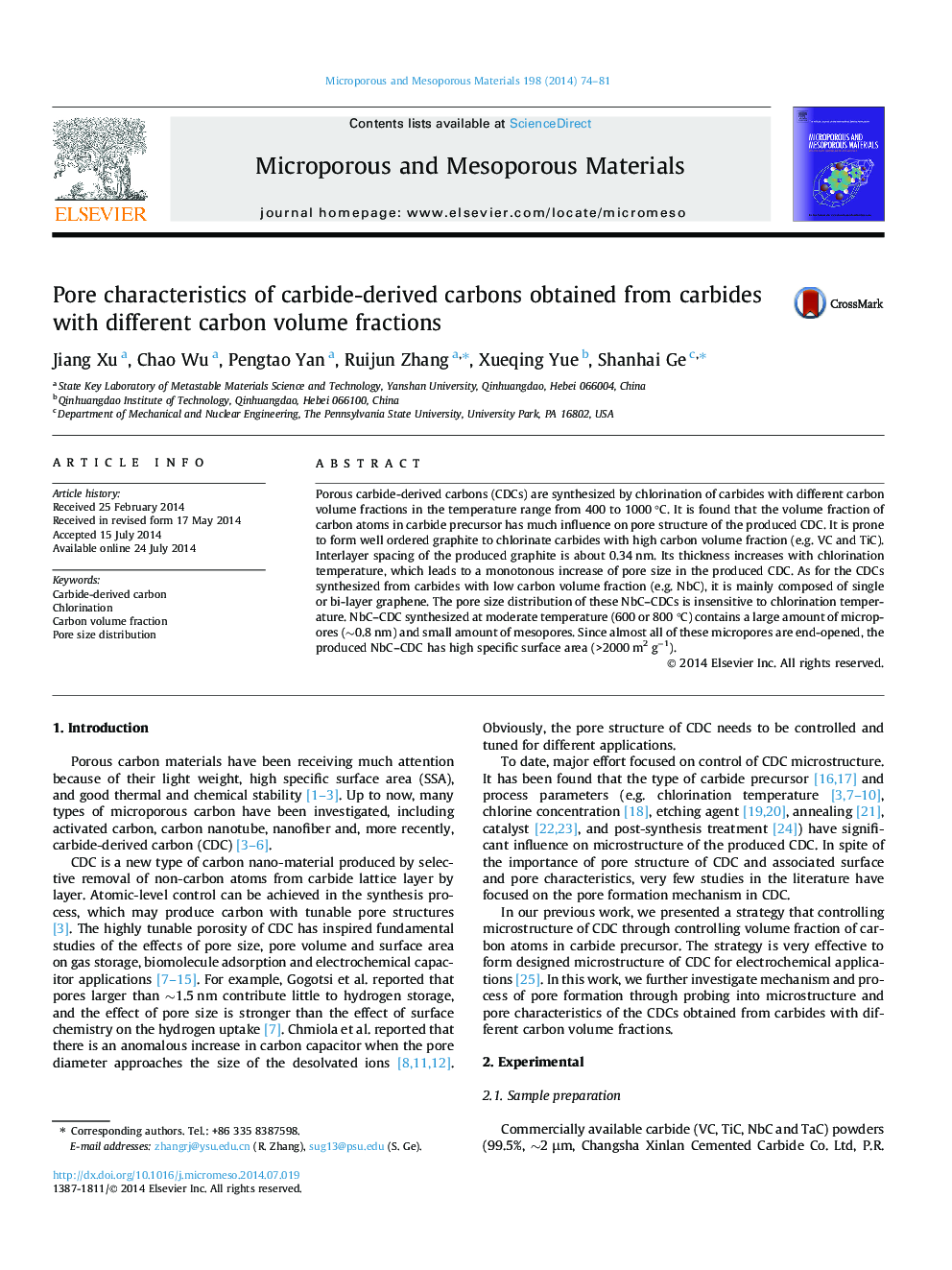| کد مقاله | کد نشریه | سال انتشار | مقاله انگلیسی | نسخه تمام متن |
|---|---|---|---|---|
| 72935 | 49038 | 2014 | 8 صفحه PDF | دانلود رایگان |
• Porous carbons prepared from carbides using chlorination method.
• Carbon volume fraction in carbide precursor affects the pore structure.
• Pore size in CDC depends on the thickness of the produced graphite.
• Pore size distribution of NbC–CDC is insensitive to chlorination temperature.
Porous carbide-derived carbons (CDCs) are synthesized by chlorination of carbides with different carbon volume fractions in the temperature range from 400 to 1000 °C. It is found that the volume fraction of carbon atoms in carbide precursor has much influence on pore structure of the produced CDC. It is prone to form well ordered graphite to chlorinate carbides with high carbon volume fraction (e.g. VC and TiC). Interlayer spacing of the produced graphite is about 0.34 nm. Its thickness increases with chlorination temperature, which leads to a monotonous increase of pore size in the produced CDC. As for the CDCs synthesized from carbides with low carbon volume fraction (e.g. NbC), it is mainly composed of single or bi-layer graphene. The pore size distribution of these NbC–CDCs is insensitive to chlorination temperature. NbC–CDC synthesized at moderate temperature (600 or 800 °C) contains a large amount of micropores (∼0.8 nm) and small amount of mesopores. Since almost all of these micropores are end-opened, the produced NbC–CDC has high specific surface area (>2000 m2 g−1).
Carbide-derived carbon (CDC) is a new type of carbon nano-material produced by selective remove of the non-carbon atoms from carbide lattice layer by layer. Atomic-level control can be achieved in the synthesis process. The pores in CDC can be regarded as the result that the space of the original carbide particle is divided by the produced graphite. For the carbides with the same crystal structure, carbon volume fraction in carbide has big influence on the pore structure of the produced CDC. Tuning the carbon volume fraction in carbide can be an effective way to produce CDC with desirable application.Figure optionsDownload as PowerPoint slide
Journal: Microporous and Mesoporous Materials - Volume 198, 1 November 2014, Pages 74–81
